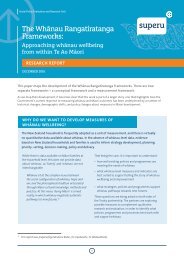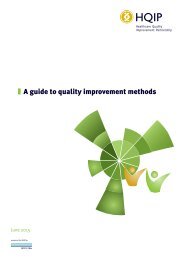2fyY1Py
2fyY1Py
2fyY1Py
You also want an ePaper? Increase the reach of your titles
YUMPU automatically turns print PDFs into web optimized ePapers that Google loves.
The EU Pledge, a voluntary initiative by Europe’s leading food and beverage companies to change the way they advertise<br />
to children, has expanded the original focus on advertising on television to include all company, brand and third-party<br />
websites, and – from December 2016 – product placement, interactive games, mobile and SMS marketing (225).<br />
To date, there has been limited independent monitoring of these industry-led approaches to restricting digital food<br />
marketing to children. A new initiative from the governments of the Nordic countries to develop a joint monitoring protocol<br />
that covers digital marketing may go some way to addressing this challenge and will make an important contribution to our<br />
knowledge on this issue (238). As noted above, self-regulatory schemes generally report high compliance with their own<br />
agreed standards – yet these have a narrow scope and weak criteria. It is perhaps not surprising that the studies cited above<br />
indicate that these approaches have not been particularly effective in limiting digital marketing of HFSS foods to children.<br />
Defining foods high in saturated fat, salt and/or free sugars across Europe and beyond: the WHO<br />
Regional Office for Europe nutrient profile model<br />
The foods most frequently marketed to children are consistently shown to be “non-core” (or “eat less”) foods, such as<br />
sugary breakfast cereals, sugar-sweetened beverages, confectionery and savoury snack foods (239). Such HFSS foods<br />
are clear targets for restrictions; however, without explicitly defined nutritional criteria or thresholds, implementing<br />
restrictions becomes practicably impossible, a challenge that has been one of the biggest obstacles to policy<br />
development (240).<br />
One tool for addressing this challenge is a nutrient profile model. Nutrient profiling is “the science of classifying or<br />
ranking foods according to their nutritional composition for reasons related to preventing disease and promoting<br />
health” (241). Of the 53 countries in the European Region, prior to 2015, only Denmark, Ireland, Norway, and the<br />
United Kingdom had developed or endorsed nutrient profile models for restricting HFSS food marketing to children<br />
(220, 242–244). A number of food companies and the EU Pledge (245) had also devised nutrient profile models.<br />
Recent political mandates in Europe, notably the Vienna Declaration on Nutrition and Noncommunicable Diseases (33)<br />
and the European food and nutrition action plan 2015–2020 (34) reinforced a commitment to adopt strong measures<br />
to reduce all forms of marketing to children, raising calls for nutrient profile tools. In response, the WHO Regional<br />
Office for Europe prepared a nutrient profile model (141) to define those foods for which marketing to children is<br />
not permitted. The model specifies five food product categories for which marketing to children is never permitted:<br />
chocolate and sugar confectionery; cakes, sweets and biscuits; energy drinks; fruit juices; and edible ices. These are<br />
generally not recommended in national dietary guidelines, and other nutrient profile models restrict similar categories<br />
of product (including EU Pledge nutrition criteria). For other product categories, the nutrient profile model establishes<br />
thresholds per 100 g for fats (total and saturated), sugars (total and added), salt and energy (kcal). The content of<br />
these nutrients in products must fall below these thresholds if the products are to be permitted to be marketed.<br />
Thus, there is now clear guidance on defining foods and non-alcoholic beverages that should not be marketed to<br />
children. Where statutory restrictions are implemented, they can clearly indicate that foods assessed as HFSS in<br />
accordance with a nutrient profile model may not be marketed to children (as in the current Irish and United Kingdom<br />
broadcast restrictions). The same would apply for digital HFSS marketing restrictions. The onus would be on the actor<br />
placing or disseminating the advertisement, promotion or sponsorship on the Internet to include nutritional criteria<br />
as part of overall compliance with marketing restrictions and on government authorities to monitor and enforce<br />
compliance.<br />
Since its publication, the WHO Regional Office for Europe nutrient profile model has received substantial attention<br />
and is being applied in countries in the Region and incorporated into national policy. Three other WHO regional offices<br />
have pilot-tested the model and made only slight modifications. It therefore now has considerable potential for global<br />
application.<br />
22






